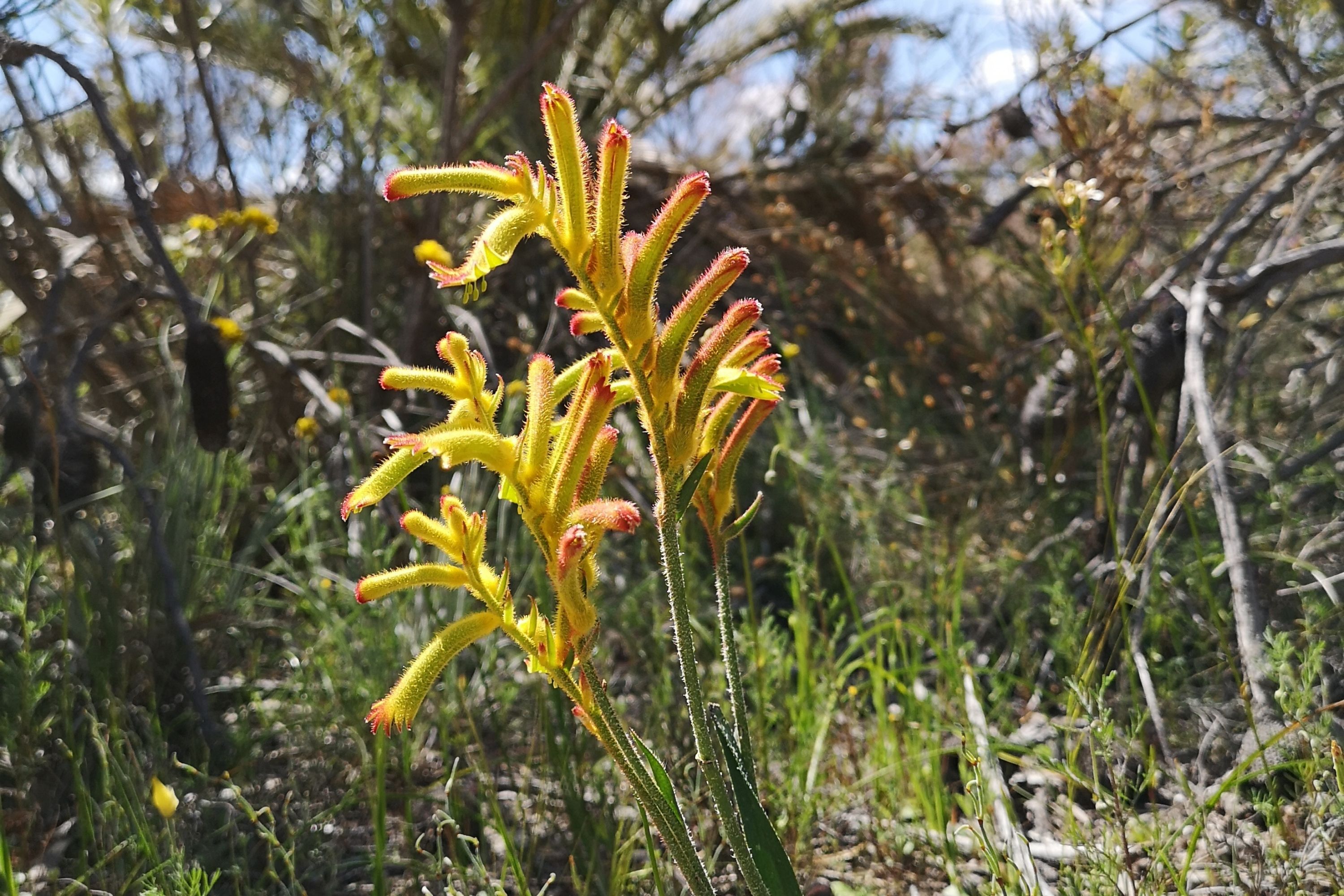Catspaw
(Anigozanthos humilis)

Description
Anigozanthos humilis is a species of Anigozanthos in the family Haemodoraceae. This flowering perennial plant is endemic to Southwest Australia and widespread in its open forests. Common names include catspaw and common catspaw. The species was first described by John Lindley in the 1840 work A sketch of the vegetation of the Swan River Colony. Three subspecies have also been described and recognised. The genus name Anigozanthos possibly combines Ancient Greek words "anisos", meaning unequal, and "anthos", meaning flower (in reference to the shape of the flowers). The specific epithet, humilis, means "low-growing". The common name catspaw was initally applied this species, then for several other species of Anigozanthos, this is assumed to have been coined to contrast these with larger flowers and scapes of 'kangaroo paws'. The widely occurring A. humilis subsp. humilis is referred to as the common catspaw. The species has a basal rosette of long strap-like leaves, emerging at the soil's surface from a rhizome beneath. A raceme of flowers appear at the terminus of long stalks, giving the plant a height up to one metre. The tuberous form of the flower bud is yellow, becoming orange then red at the opening. It is typically 0.4-1 meter tall and 0.3-0.6 meters across. Anigozanthos is a genus of Southwest Australian plants of the bloodwort family Haemodoraceae. The 11 species and their subspecies are commonly known as kangaroo paw or catspaw, depending on their size, and the shape and color of their flowers. A further species, previously identified as Anigozanthos fuliginosus (black kangaroo paw), was separated to a monotypic genus as Macropidia fuliginosa. The species are recognised by their unusual flowers, numerous hybrids have been developed for cultivation and floristry. The red-and-green kangaroo paw is the floral emblem of Western Australia. These perennials are endemic to dry sandy, siliceous areas of southwest Australia, but they occur as well in a variety of other environments and soil types. They are grown commercially in Australia, the United States, Japan and Israel. The plant grows from short, underground, horizontal rhizomes. The length and the character of these may vary between the species: some are fleshy, others are fragile. The sap in the root system allows the plants to survive extreme dry spells. In summer, a number of species die back to the rhizome, growing back in autumn.
Taxonomic tree:







